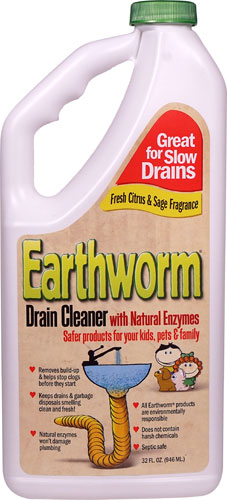America, we’ve got a heap of trash trouble.
In 2015, Americans produced 262.4 million tons of garbage. Only about one-fourth of it was recycled. Even less — almost 9 percent — was composted.
Over the years, recycling’s popularity among U.S. consumers has picked up. Composting, on the other hand, has been a laggard. While Americans compost about three-fifths of yard clippings, they compost only about 5 percent of food waste, according to a Pew Research Center analysis of data from the U.S. Environmental Protection Agency.
In all, compostable material makes up anywhere from one-third to one-half of municipal solid waste in the U.S., the Institute for Local Self-Reliance says.
So, why is so much of our waste not being composted? Part of what’s holding Americans back from joining the composting crusade is the misconceptions that abound.
Here, we’ll explain what composting and compost are, clear up some of the most common misconceptions about composting and provide composting tips.
What is composting?
Composting is the natural process that converts organic waste into compost.
“Composting is far more than just free fertilizer for the garden. It’s a vital and necessary sustainability strategy for reducing waste, closing the nutrient cycle, and preventing air pollution that causes climate change,” according to Small Footprint Family, a website that promotes sustainability.
What is compost?
As defined by the Institute for Local Self-Reliance, compost is “the dark, crumbly, earthy-smelling material produced by the natural decomposition of organic materials.”
The main benefit of compost? It improves soil quality; rich soil encourages plant growth.
Compost consists mostly of food scraps and yard trimmings. But it also includes soiled paper such as pizza boxes and paper towels, along with a whole host of other items.
Dan Noble, executive director of the Association of Compost Producers, notes that people often don’t grasp the clear distinction between compost and composting.
“There are many types of composting that give rise to many types of compost,” Noble says. “As an industry, we need to do a better job of marketing.”
What are some common misconceptions about composting?
1. It’s gross.
Amanda Harari, founder and CEO of Woken Coffee, a maker of compostable espresso pods, says some folks view composting as smelly, yucky and unappealing. But as time goes by, more education and better technology will help this misconception fade, she says.
Brenda Platt, director of the Composting for Community Project at the Institute for Local Self-Reliance, says some people wrongly believe that composting is a smelly process that interests gardeners but no one else. “If done right, composting doesn’t produce nuisance odors,” she says.
According to Gardener’s Supply Co., compost causes odors only when it’s too wet or it’s got too much nitrogen. Proper composting techniques will prevent a compost collection from becoming stinky, the company says.
2. It’s too hard.
“If you live in a city that offers compost pickup to a composting facility, it is just like recycling, except the box is smaller and it’s a different color,” Harari says. “I think more people would be willing to compost if cities made it more convenient.”
Composting need not be a citywide undertaking, though. The lack of large-scale composting initiatives is often cited as an obstacle to beefing up composting activity, Platt says, but that can be overcome with smaller-scale composting at places like homes and community gardens.
“There’s no one way to compost,” Platt says. “Schools can compost on-site as part of school gardens. Many universities and colleges are composting their food scraps on-site — employing students and growing food from compost-amended soils that end up back in dining halls.”
3. It’s time-consuming.
An open compost pile that never gets turned might take several seasons to decompose, Gardener’s Supply says, but a tumbling composter can create nutrient-rich compost in as little as six weeks.
4. It’s a pest magnet.
Gardener’s Supply says an enclosed composter can fend off unwanted critters like rats, dogs and cats. Another deterrent: Stick to traditional compost items like vegetable scraps and yard waste, and avoid meat or dairy products.
How do I get started with composting?
Before you jump into composting, it might be wise to do some research online or seek out a local program that teaches people about nature’s recycling method.
Once you’ve committed to composting, Kelly McGlinchey, founder of food-sustainability consulting firm Table & Tilth, recommends buying a compost tumbler.
“Especially for first-time composters, the tumbler set up is easy to use and requires virtually no maintenance. They’re also widely available for purchase online, with lots of sizes to choose from,” McGlinchey says.
Look for a compost tumbler that fits your home and lifestyle, she says. For instance, a smaller urban home occupied by a couple with no kids might not need or accommodate a large compost tumbler. But a family of five living in the suburbs generates a lot of waste and probably should invest in a bigger compost tumbler, McGlinchey says.
She also suggests putting a small compost collection bin in your kitchen, making it simpler to discard food scraps when you’re cooking.
“Most models available for purchase will have a built-in filter to help manage any unwanted odors while your food scraps are in the collection bin, waiting to be taken to the compost pile,” McGlinchey says. “I usually empty my kitchen compost bin every few days into my home tumbler.”
In addition, consider setting up a bin for vermicomposting, or worm composting. Most vermicomposting systems use red wiggler worms, “which are particularly efficient at eating food scraps and breaking them down into nutrient-rich, beneficial compost for your garden or yard,” McGlinchey says.
Worm-composting systems typically take up little space. Prefabricated worm bins are available for sale, McGlinchey notes, or you can assemble a bin on your own.
Aside from being environmentally friendly, she says, “a worm condo in your home is always a great conversation starter when guests come over.”




